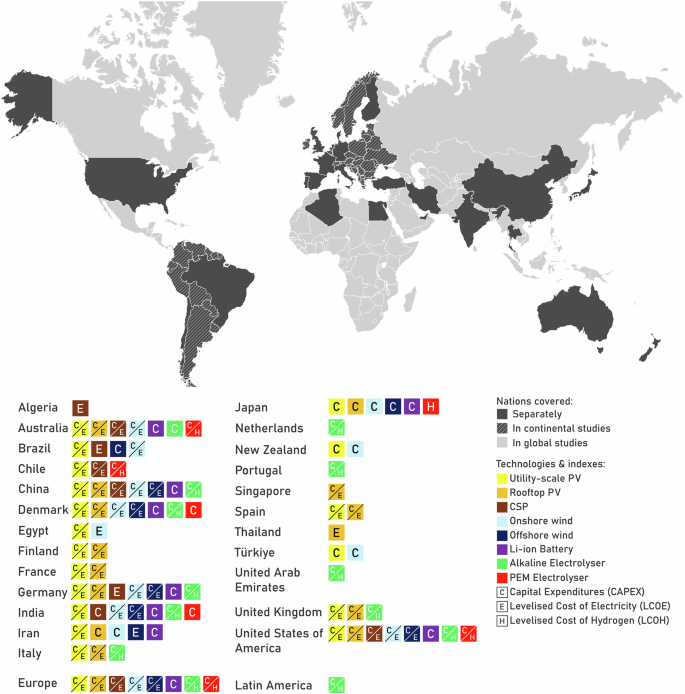Report on Proposed New York Legislation Targeting Proof-of-Work Mining and its Alignment with Sustainable Development Goals
1.0 Legislative Overview
On October 17, New York legislators introduced Assembly Bill A9138, a measure designed to address the significant energy consumption associated with proof-of-work (PoW) digital asset mining. The bill proposes a tax on electricity usage by mining operations, reflecting a growing legislative focus on the environmental and social impacts of the industry. This initiative, along with a related proposal, directly aligns with several United Nations Sustainable Development Goals (SDGs), particularly those concerning energy, climate, and inequality.
2.0 Analysis of Assembly Bill A9138
The proposed legislation establishes a framework for taxing PoW miners based on their annual electricity consumption. This measure is intended to promote more sustainable operational practices within the industry.
2.1 Proposed Taxation Structure
The bill outlines a tiered tax schedule based on annual kilowatt-hour (kWh) consumption, creating a progressive system that targets high-volume energy users:
- 0 – 2.25 million kWh/year: 0 cents per kWh
- 2.25 – 5 million kWh/year: 2 cents per kWh
- 5 – 10 million kWh/year: 3 cents per kWh
- 10 – 20 million kWh/year: 4 cents per kWh
- 20+ million kWh/year: 5 cents per kWh
2.2 Scope and Current Status
The bill provides a specific definition for “digital asset mining using proof-of-work authentication methods” to ensure targeted application. It also stipulates that entities within a “controlled group” will be treated as a single taxpayer. Currently, the bill is under review in the Assembly Committee. If enacted, the tax would become effective on January 1, 2027.
3.0 Alignment with Sustainable Development Goals (SDGs)
The proposed legislation strongly supports the achievement of key SDGs by addressing the externalities of energy-intensive digital asset mining.
3.1 SDG 7 (Affordable and Clean Energy) & SDG 12 (Responsible Consumption and Production)
By imposing a tax on high electricity usage, Bill A9138 directly encourages responsible consumption (SDG 12). It disincentivizes the inefficient use of energy, pushing the industry towards more sustainable validation methods or greater energy efficiency. This contributes to the broader goal of ensuring access to sustainable energy for all (SDG 7) by managing the demand from a high-consumption sector.
3.2 SDG 13 (Climate Action)
The significant energy footprint of PoW mining is a major contributor to carbon emissions, undermining climate action efforts. The proposed tax serves as a fiscal policy tool to mitigate this environmental impact. By internalizing the cost of high energy consumption, the legislation encourages a reduction in activities that contribute to climate change, thereby supporting SDG 13.
3.3 SDG 10 (Reduced Inequalities) & SDG 11 (Sustainable Cities and Communities)
A companion bill, S8518, further strengthens the state’s commitment to the SDGs. This proposal would require digital asset miners to contribute levies to New York’s Energy Affordability Program. The program’s objective is to ensure that low-income households do not spend more than 6% of their income on energy bills. This directly addresses SDG 10 by using revenue generated from a high-growth industry to reduce financial burdens on vulnerable populations. It also supports SDG 11 by fostering inclusive and sustainable communities where essential services like energy are affordable for all residents.
4.0 Conclusion
The legislative proposals in New York, including Assembly Bill A9138 and Senate Bill S8518, represent a comprehensive strategy to regulate the digital asset mining industry. By linking energy consumption to fiscal responsibility, these measures create a powerful incentive for sustainable practices. The framework demonstrates a clear alignment with the Sustainable Development Goals, specifically targeting responsible energy consumption, climate action, and the reduction of social inequalities, thereby promoting a more equitable and environmentally conscious economic landscape.
Which SDGs are addressed or connected to the issues highlighted in the article?
SDG 7: Affordable and Clean Energy
- The article discusses two bills aimed at the high electricity consumption of digital asset miners. One bill, S8518, proposes that miners pay levies to New York’s Energy Affordability Program, which directly supports the goal of affordable energy by providing “financial assistance to households struggling to pay energy bills.”
SDG 10: Reduced Inequalities
- The proposed bill S8518 aims to use funds from taxing a high-consumption industry to support households in need. The article states the program’s goal is to ensure these households “pay no more than 6% of their yearly household income on energy,” which is a direct fiscal policy measure to reduce the economic burden on lower-income populations and thereby reduce inequality.
SDG 12: Responsible Consumption and Production
- The primary bill discussed, A9138, imposes a tiered tax based on the amount of electricity consumed in kilowatt-hours. This fiscal measure is designed to encourage more efficient and responsible consumption of energy by digital asset miners, as higher consumption leads to a higher tax rate.
SDG 13: Climate Action
- Proof-of-work mining is an energy-intensive process that contributes to high electricity demand, often met by fossil fuels. By proposing a tax on electricity consumption (A9138), lawmakers are creating a financial disincentive for this high-energy use. This represents a state-level policy measure aimed at mitigating activities with a significant energy and potential climate footprint, which aligns with integrating climate action into policy.
What specific targets under those SDGs can be identified based on the article’s content?
Target 7.1: Ensure universal access to affordable, reliable and modern energy services
- The article’s mention of the “Energy Affordability Program,” funded by levies on miners, directly addresses the “affordable” aspect of this target. The program’s specific aim is to help households struggling with energy bills, contributing to making energy services more accessible to all.
Target 10.4: Adopt policies, especially fiscal, wage and social protection policies, and progressively achieve greater equality
- The proposed bills A9138 and S8518 are fiscal policies (taxes and levies) designed to fund a social protection program (the Energy Affordability Program). This mechanism of taxing a specific industry to provide financial relief to vulnerable households is a clear example of using fiscal policy to achieve greater equality.
Target 12.2: Achieve the sustainable management and efficient use of natural resources
- The tax structure in bill A9138, which increases with higher electricity consumption, directly incentivizes the more efficient use of energy (a natural resource) by miners. The goal is to encourage sustainable management of energy resources by making wasteful consumption more expensive.
Target 13.2: Integrate climate change measures into national policies, strategies and planning
- The proposed tax on electricity consumption is a policy instrument that can be considered a climate change mitigation measure. By discouraging excessive energy use in a specific sector, the policy is integrated into state-level planning to address activities with high environmental impacts.
Are there any indicators mentioned or implied in the article that can be used to measure progress towards the identified targets?
Proportion of household income spent on energy
- The article explicitly states that the Energy Affordability Program intends to ensure households “pay no more than 6% of their yearly household income on energy.” This percentage serves as a direct and measurable indicator for assessing progress towards Target 7.1 (affordable energy) and Target 10.4 (social protection).
Annual electricity consumption by the digital asset mining sector
- The tax in bill A9138 is based on “kilowatt hours.” Tracking the total annual electricity consumption in kilowatt-hours by the mining sector would be a direct indicator of the policy’s effectiveness in promoting more efficient energy use, as per Target 12.2. A reduction in consumption would indicate progress.
Implementation of a tax policy on high electricity consumption
- The existence and details of bill A9138 itself—a tax on electricity consumption for a specific industry—serve as an indicator of policy action. The article outlines the specific tax schedule (e.g., “2 cents per kilowatt hour” for a certain range). This demonstrates the integration of environmental and climate-related measures into state policy, relevant to Target 13.2.
Revenue generated and redistributed to social programs
- The amount of money collected from the levies proposed in bill S8518 and funneled into the Energy Affordability Program can be measured. This would serve as an indicator for Target 10.4, quantifying the scale of the fiscal policy’s contribution to social protection and equality.
| SDGs, Targets and Indicators |
|---|
| SDGs | Targets | Indicators |
|---|---|---|
| SDG 7: Affordable and Clean Energy | 7.1: Ensure universal access to affordable, reliable and modern energy services. | Proportion of household income spent on energy (specifically, the goal of not exceeding 6% for assisted households). |
| SDG 10: Reduced Inequalities | 10.4: Adopt policies, especially fiscal, wage and social protection policies, and progressively achieve greater equality. | Revenue generated from taxes/levies on miners and redistributed to the Energy Affordability Program. |
| SDG 12: Responsible Consumption and Production | 12.2: Achieve the sustainable management and efficient use of natural resources. | Annual electricity consumption (in kilowatt-hours) by the digital asset mining sector. |
| SDG 13: Climate Action | 13.2: Integrate climate change measures into national policies, strategies and planning. | Implementation of a tax policy on high electricity consumption, with specific tax rates per kilowatt-hour as defined in the bill. |
Source: coingeek.com







